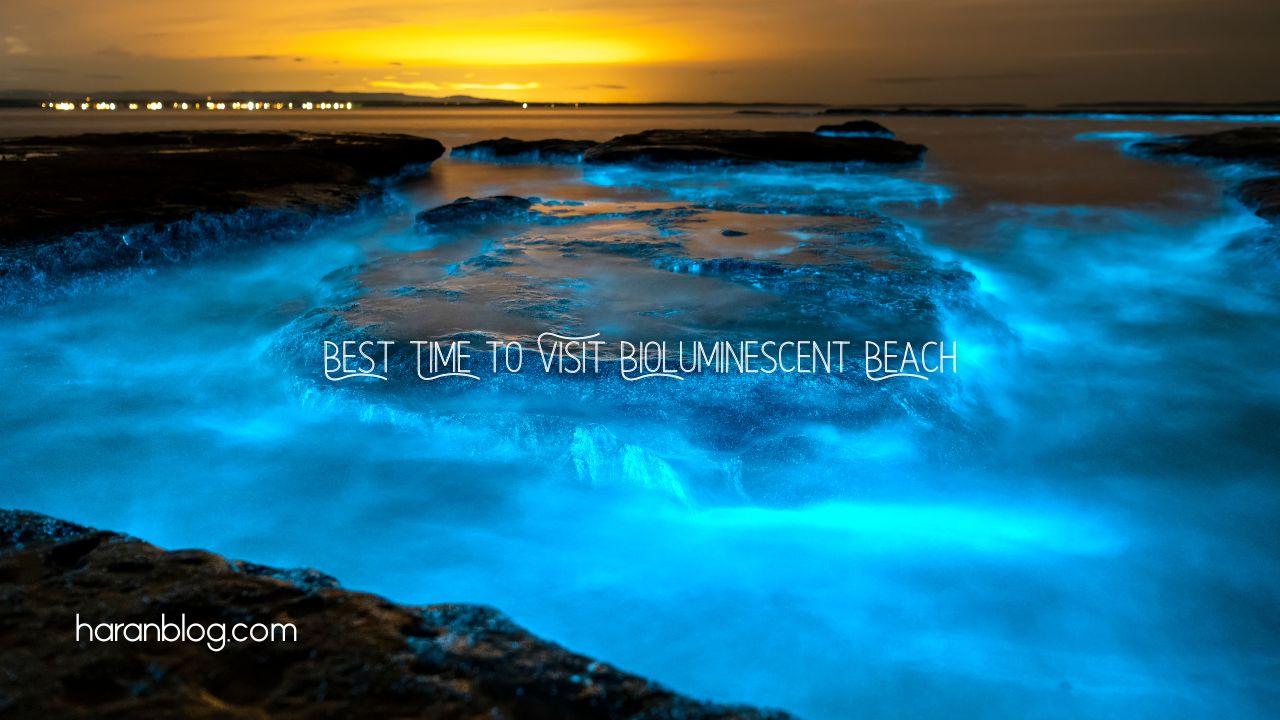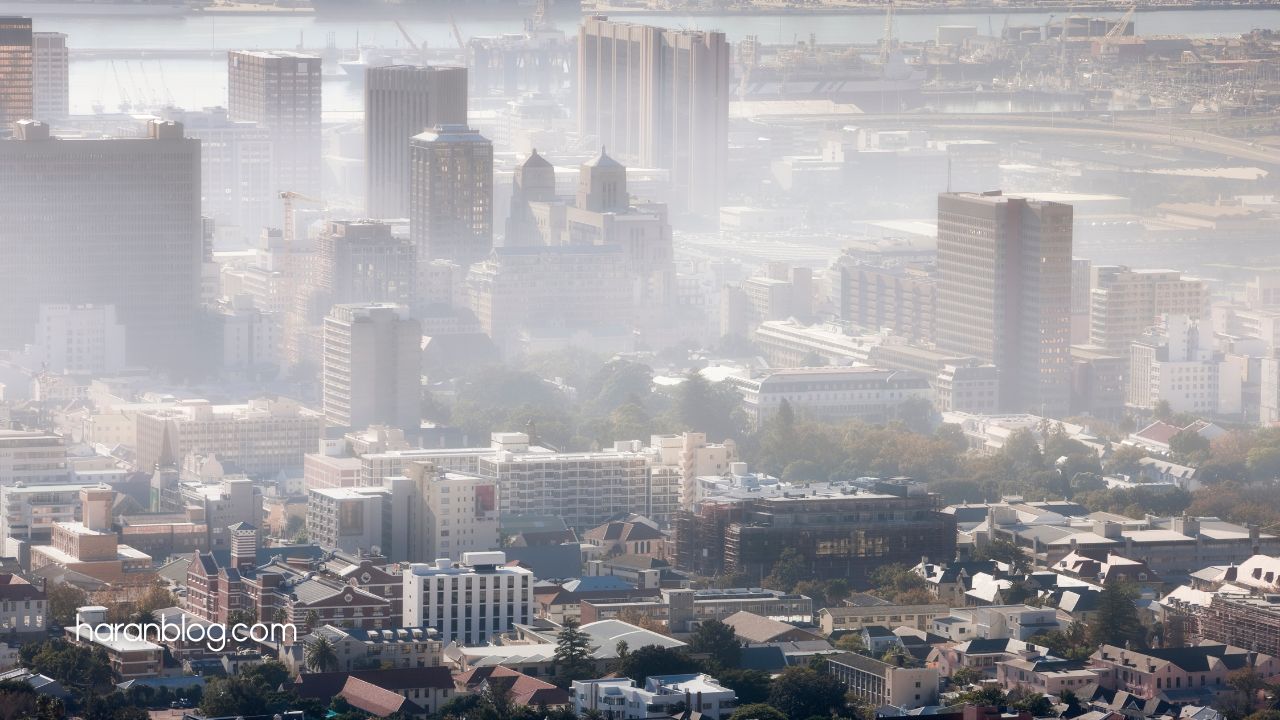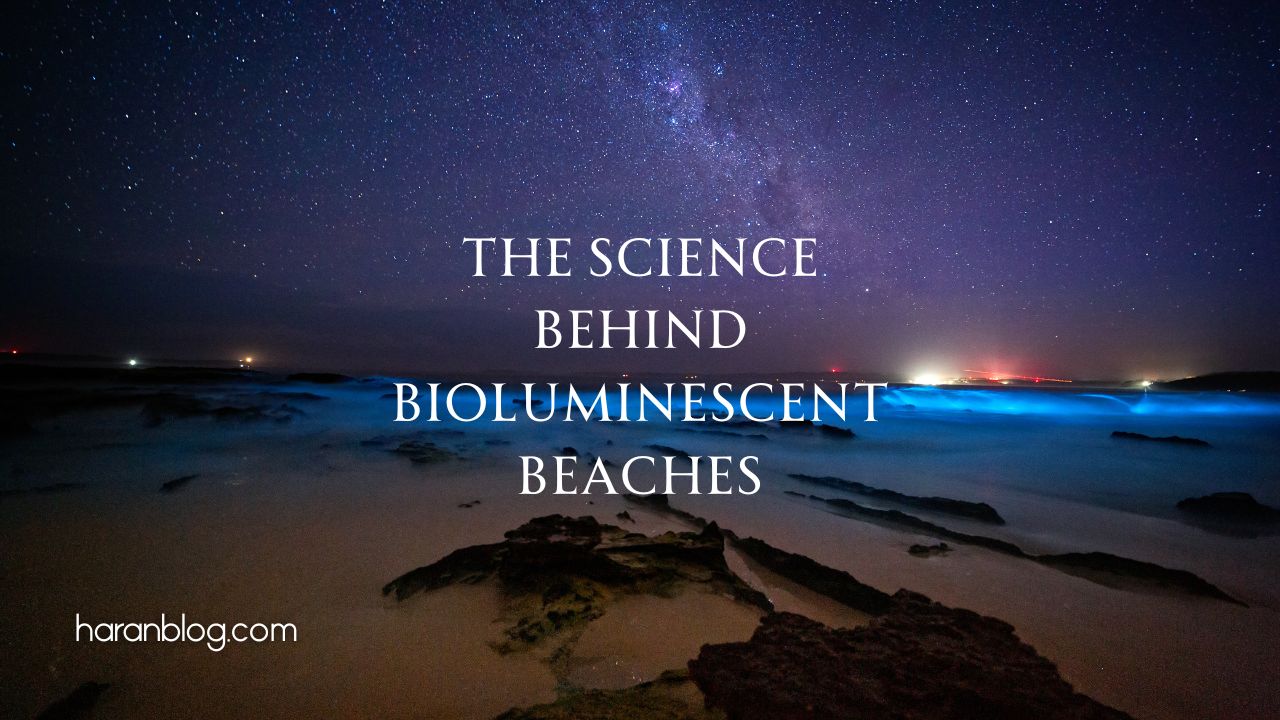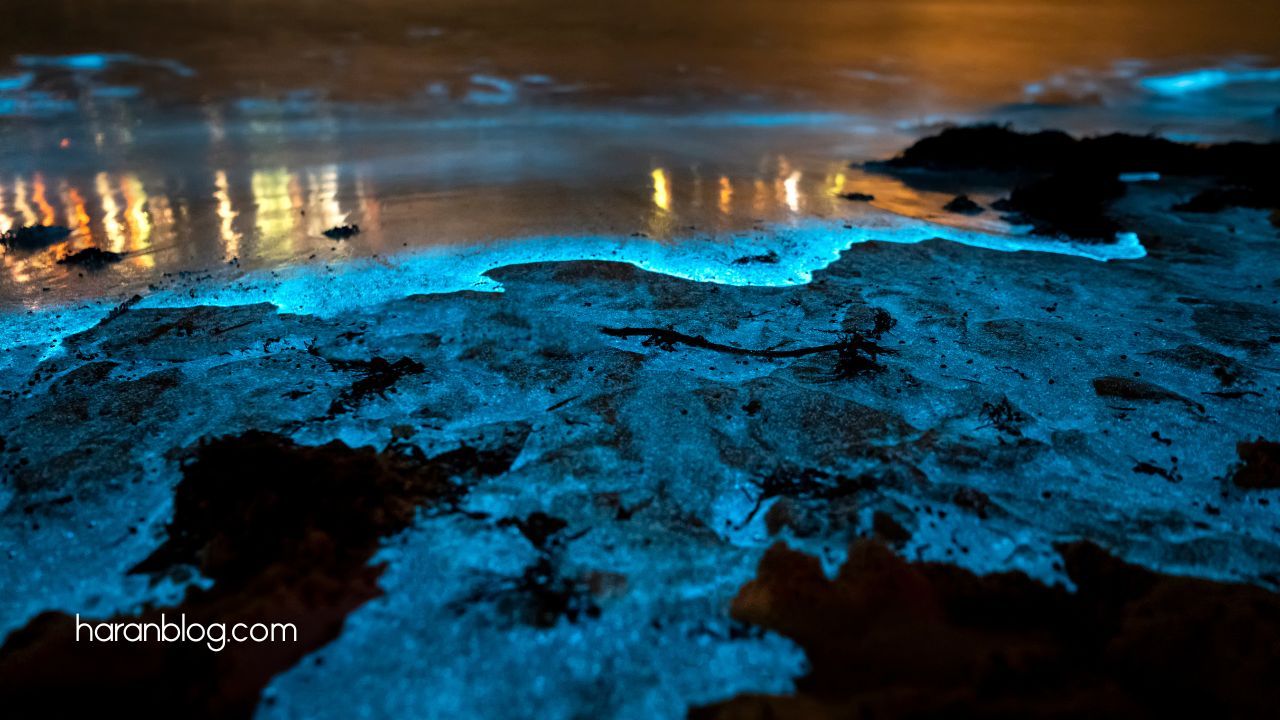A magnificent natural beauty, Bioluminescent beach provide visitors with the enchanting sensation of glowing water and the amazing beauty of bioluminescent species lighting the coast.
Still, the ideal time to visit these shining beaches will rely on a number of variables, including lunar phases, temperature, and even environmental conditions.
This guide will show you the ideal times to visit bioluminescent beaches to guarantee you maximize this amazing encounter.
Recognizing Bioluminescence and Its Timing
Understanding how bioluminescence operates can help us determine when would be the ideal visit to bioluminescent beaches.
In the case of bioluminescent beach, the generation and emission of light by living entities mainly results from dinoflagellates. Microscopic plankton that light up when disturbed.
Usually when waves collide or swimmers travel over the water, chemical interactions in the organisms cause the glow.
Many important elements influence the existence of these plankton, which is very important in deciding the ideal moment to see their glow.
Elements Influencing Bioluminescence Visibility
1. Phase of the Moon
The visibility of the bioluminescence will be much influenced by the phase of the moon.
With their strong brightness, full moons can overwhelm the glow of the plankton. Therefore making it more difficult to view the bioluminescent displays.
Conversely, new moons let the bioluminescence blossom through and offer the darkest conditions when the moon is not visible in the sky.
Best Time: For best viewing conditions. Try to go during the new moon phase or when the moon is crescent phase.
2. Water Movement: Tides
The strength of bioluminescence depends much on tides. Usually, more water movement from higher tides promotes the plankton to glow. Visiting with a high tide will thus raise the possibility of witnessing more dramatic bioluminescent displays.
Still, a calm sea is also essential; strong winds and turbulent waves might distribute the plankton, therefore reducing the glow’s visibility.
Best Time: Try to observe the glow by going during high tide. Online tide schedules for particular areas are easily available.
3. Water Temperature
Furthermore influencing the visible bioluminescence is water temperature. Warm water temperatures usually help the dinoflagellates causing bioluminescence develop.
For a stunning light display, summer and warmer months are therefore usually the ideal times to come.
Best Time: Go during the warmer months when plankton activity is best matched for water temperature.
4. Climate: Weather
Experiencing the glow is best done under clear sky and moderate temperatures. Strong gusts, clouds, or rainy conditions can all disturb the surroundings and complicate view of the bioluminescence at its best.
Choosing a time of year with persistent, clear weather will raise your chances of seeing an amazing bioluminescent display.
Best Time: See the weather report to be sure you’re visiting calm, clear evenings.
Greatest Season for Bioluminescent Beach
Although bioluminescent beaches are visited all year round, some seasons provide better viewing conditions for the glow.
Summer (Better for Warm Water)
Usually May through September, summer brings rising water temperatures that help the bioluminescent plankton flourish and be active.
Especially in tropical places like Puerto Rico or the Maldives. This is usually the most constant time to find a brilliant beach.
The summer months are the optimum time for a visit since they offer ideal conditions for both plankton activity and water temperature.
Winter (Perfect for Calm, Clear Weather)
In select areas, including Toyama Bay in Japan or some areas of the Maldives, winter months can provide special bioluminescent experiences. Especially if you wish to observe brilliant squid or other aquatic life in addition to plankton.
Clearer sky and calmer weather brought forth by the cooler temperatures can help bioluminescence’s visibility be improved.
Winter, usually November through February, in places noted for cooler water temperatures could offer a unique but equally amazing bioluminescence experience.
Dry Season (Best for Continual Conditions)
The dry season—often from November to April—ensures consistent, predictable weather in tropical locations as Puerto Rico, Thailand, or the Maldives.
This is usually the greatest time to visit since there is less possibility of rain or strong winds that can hinder your view of the bioluminescence at its best.
Best Time: Dry season months like December through April usually provide the most constant, perfect weather for seeing spectacular beaches.
How to Schedule Your Trip
Knowing when to visit bioluminescent beaches can help you to ensure you have the best experience: here are some more pointers:
1. Verify Local Tide and Moon Schedules
Plan your journey according on the lunar cycle and tide charts for the place you want since tide and moon phases can greatly affect your experience.
Apps and websites can assist you to choose the ideal times for minimum moonlight and ideal tide conditions.
2. Visit Right Now Tonight
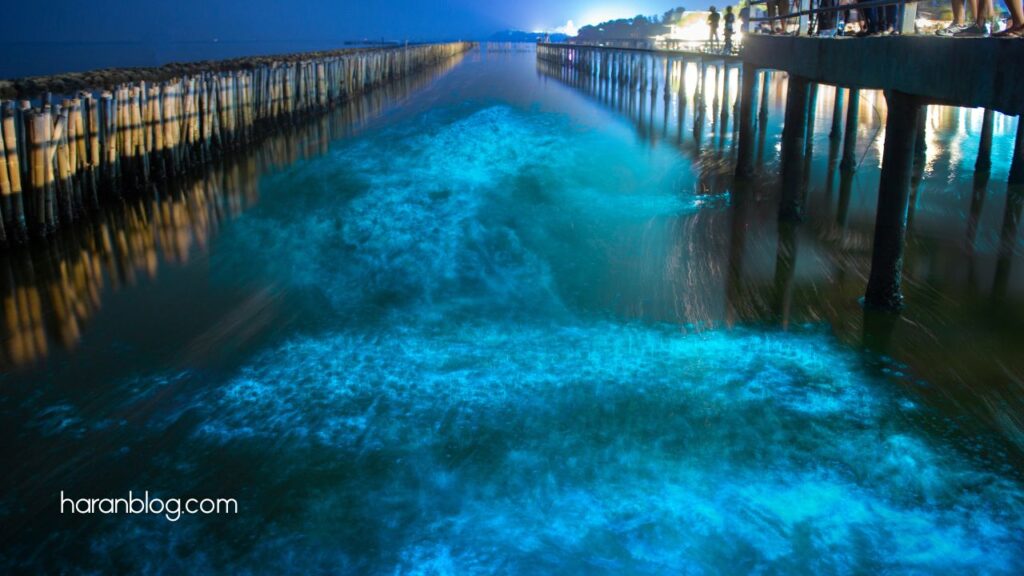
Most clearly seen at night is bioluminescence. Visit between 9 PM and midnight, when the beach is the darkest, for the most brilliant, amazing shows.
Remember that most bioluminescent beaches are more active at night when human activity—swimmers or waves—can disturb the water and induce the glow.
3. Honour the Surroundings
You really should respect the natural surroundings when visiting bioluminescent beach.
Steer clear of too much movement or too much disturbance of the water as this could harm the fragile plankton colonies. Pay attention to your surroundings and apply local sustainable travel policies.
In Essence
The ideal time to explore bioluminescent beach depends on moon phases, tides, water temperature, and weather conditions among other elements.
Aim to visit for the brightest and most amazing shows around the new moon phase, at high tide, and in the warmer months of the year, especially in tropical climates.
Correct scheduling of your trip will increase your chances of seeing the magnificent glow of these stunning beaches and generating lifelong memories.
Frequently Asked Questions
Generally speaking, the optimal period is in the warmer months. May through September—when water temperature is ideal for plankton activity.
Indeed, but visit during new moon phases and high tides. To have the finest experience by consulting the moon phase and tidal schedules.
Check local tides, temperature, and lunar phases since these elements directly influence the bioluminescence intensity. The best view comes on clear, quiet evenings with a fresh moon.
